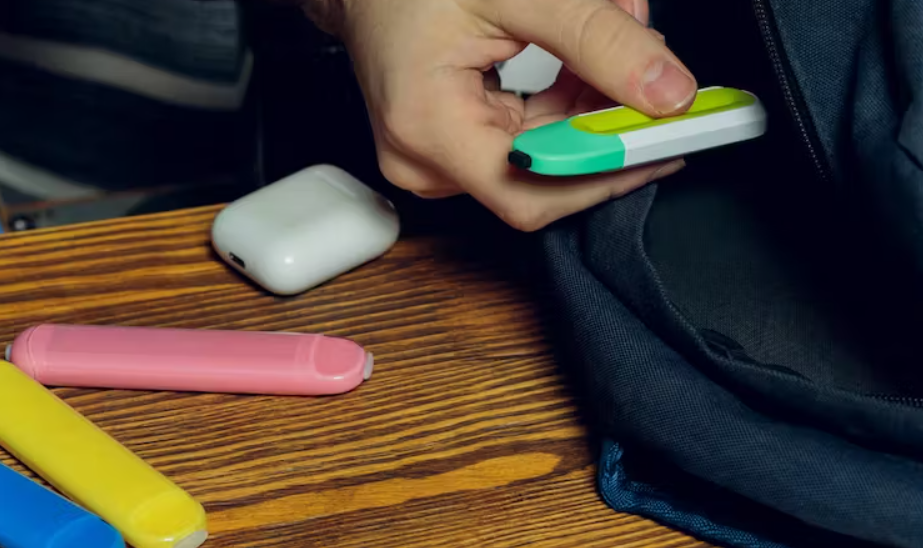Vaping and Behaviour in Schools: Exploring the Impact on Teenagers

Vaping has become a significant issue among high school students, and the Australian government has proposed a series of reforms aimed at reducing vaping in schools. This article will explore the issue of vaping in schools by examining research conducted by the Generation Vape study. The study tracks teenagers' knowledge, attitudes, beliefs, and behaviors about using vapes or e-cigarettes. This article will look at the prevalence of vaping in high schools, the reasons behind teenage vaping, and the kind of behavioral issues associated with it. Furthermore, the article will examine what teachers, principals, and school administrators are saying about the issue of vaping in schools, and what kind of behavior issues are linked to vaping. Finally, the article will look at what evidence tells us is needed to address this problem.
Prevalence of Vaping in High Schools:
According to the Generation Vape study, about one in three teenagers have tried vaping. Of the 721 young people surveyed so far, 32% had ever vaped, while 54% of ever-vapers had never smoked cigarettes before starting vaping. This implies that young people who have tried smoking are much more likely to have tried vaping. Ever-vapers were 18 times more likely to be ever-smokers than those who had never vaped. Most teenagers said the main factor driving their vaping was flavoring and taste.
Frequency of Vaping:
The study also investigated the frequency of vaping, revealing that 10% typically used vapes on six or more days a month. Occasional users told the researchers that they are trying vaping because they are curious, interested in experiencing the hit from nicotine, and do not imagine themselves getting addicted. Unfortunately, these occasional users often do find themselves addicted, which is why a public health response is urgently needed. The fact that most of them are occasional users suggests that there is a window of opportunity to act now before they become addicted.
What Teachers, Principals, and School Administrators are Saying?
The study also interviewed teachers, principals, and school administrators about vaping in schools. The results showed that 58% of teachers have confiscated vaping products from students two or more times a week, while 86% of teachers are concerned or very concerned about students vaping in their school. Teachers reported feeling they had to police students by searching bags and pencil cases, and that having to manage vaping as a disciplinary issue took time away from teaching. Principals and school administrators talked about using school funds to install vape detectors in school toilets and having to liaise with parents of children caught vaping.
Behavioral Issues Associated with Vaping:
The Generation Vape study found that teens who vape regularly experienced nicotine withdrawal while at school, which can feel like anxiety or stress. Many of them told the researchers they vape for their mental health, not understanding the stress is linked to the addiction. They also reported sneaking out of class to vape, feeling distracted and finding it difficult to focus in the classroom, and feeling stressed about needing to hide their device and their vaping while at school.
One 17-year-old interviewed by the researchers said that they saw people at school at nine o'clock in the morning going, “Oh, do you have a vape? Do you have a vape? I need one. I haven't had one all day,” and begging people for it. The teenager suggested that it's mostly an addiction thing with people who are heavy users.
What Evidence Tells Us is Needed:
The evidence tells us that we need to get these products out of the hands of young people. That's why making them harder to buy is vital. The research indicates that teenagers are mostly vaping because of the flavors and taste of the products. Therefore, one approach to reducing vaping in schools is to regulate the flavorings in vapes.
Conclusion
In summary, the evidence suggests that vaping is a significant behavioural issue in schools, with one in three teenagers having tried vaping and a significant proportion using vapes on a regular basis. Vaping is associated with a range of behavioural issues, including distraction, sneaking out of class, and experiencing nicotine withdrawal while at school.
To address this issue, we need a multifaceted public health response that focuses on preventing young people from accessing vaping products, increasing awareness about the harms of vaping, supporting those who are addicted to quit, and addressing the social and cultural factors that are contributing to the normalisation of vaping.
Ultimately, if we want to protect the health and wellbeing of young people and create a safe and supportive learning environment in schools, we need to take action now to address the growing problem of vaping in schools.